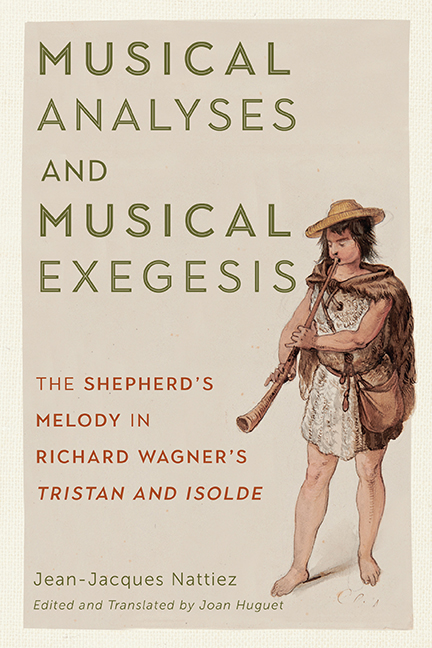 Musical Analyses and Musical Exegesis
Musical Analyses and Musical Exegesis Book contents
- Frontmatter
- Dedication
- Contents
- Foreword to the French Edition
- Preface
- Introduction: The English-Horn Solo, My Approach, and Models of Analysis and Musical Meaning
- Part I Immanent Analysis of the English-Horn Solo’s Musical Structures
- Part II Esthesic Analysis
- Part III Poietic Analysis
- Part IV Hermeneutics
- Conclusion: The Validity of Structural Analyses and Interpretations
- Bibliography
- Index
8 - The Solo’s Composition: Sketches and the Creative Process
Published online by Cambridge University Press: 02 June 2021
- Frontmatter
- Dedication
- Contents
- Foreword to the French Edition
- Preface
- Introduction: The English-Horn Solo, My Approach, and Models of Analysis and Musical Meaning
- Part I Immanent Analysis of the English-Horn Solo’s Musical Structures
- Part II Esthesic Analysis
- Part III Poietic Analysis
- Part IV Hermeneutics
- Conclusion: The Validity of Structural Analyses and Interpretations
- Bibliography
- Index
Summary
Sketch Study
I began my discussion of source study in chapter 7 by situating it within the taxonomy of literary criticism techniques laid out by Gustave Rudler. Similarly, I will begin this chapter by reviewing what Rudler refers to as critique de genèse, with which we can recreate Wagner's poietic process for the solo. We will thus move from the solo's general sources of inspiration to the development of its final musical text.
Rudler rightly suggests that the study of a work's sketches should not begin until the study of its sources is “completed, or at least well underway.” This is exactly how I have proceeded, as my investigations in chapter 7 have allowed me to show how Wagner employed the borrowed materials that inspired him. However, I have saved another source for chapter 11, a citation from Schopenhauer that will shed new light on the interpretations in chapters 7 and 8. I have followed Rudler's advice by first examining Wagner's writings and letters, a process that my expanded tripartite model refers to as external poietics. In contrast, my study of the solo's development in this chapter will rely solely on the information provided by Wagner's sketches.
Rudler states that the researcher must then proceed by studying the work's first drafts and variants. I view these sketches as external documents, insofar as they differ from the final version of the work. Jean Molino describes them as “poietic documents, in which we must uncover everything that differs from the published version of a work, no matter what its nature, in order to bring to light the circumstances of its production.”
But another poietic approach is also available to us, which I refer to as inductive poeitics. This method hypothesizes about the creative process from the starting point of the musical structures present in the work's final version. This approach does not appear in Rudler's methodology; however, Molino considers it in his survey of poietic studies, deeming it to be an acceptable approach. He writes:
We must add a final source of poietic information to our list, which is both the most obvious and the most unexpected: the text itself. J.-J. Nattiez employs an inductive poietic methodology that breaks a composition down into the actions that produced it, each of which leaves its trace on the final version.
- Type
- Chapter
- Information
- Musical Analyses and Musical ExegesisThe Shepherd's Melody in Richard Wagner's <I>Tristan and Isolde</I>, pp. 291 - 320Publisher: Boydell & BrewerPrint publication year: 2021
